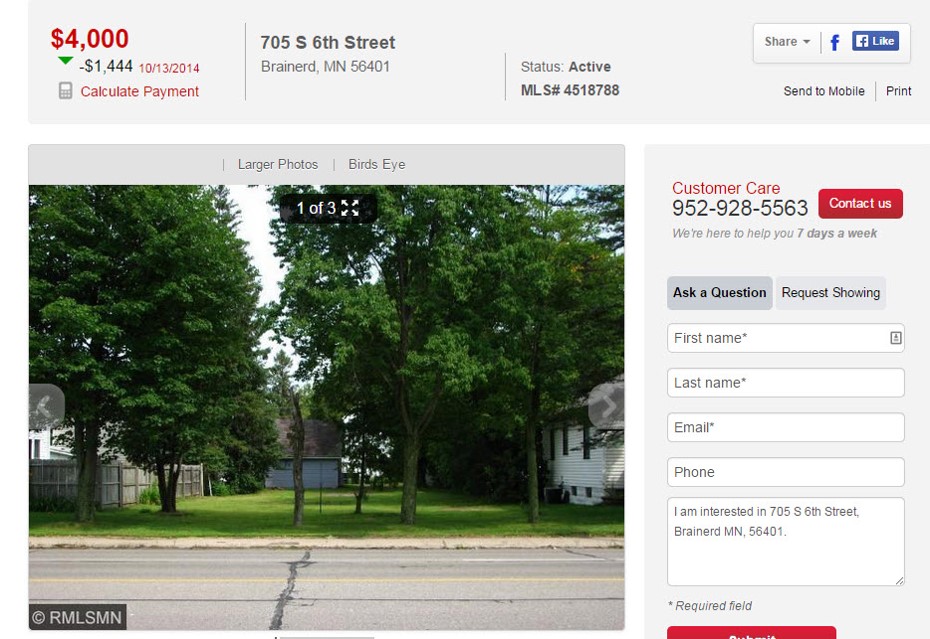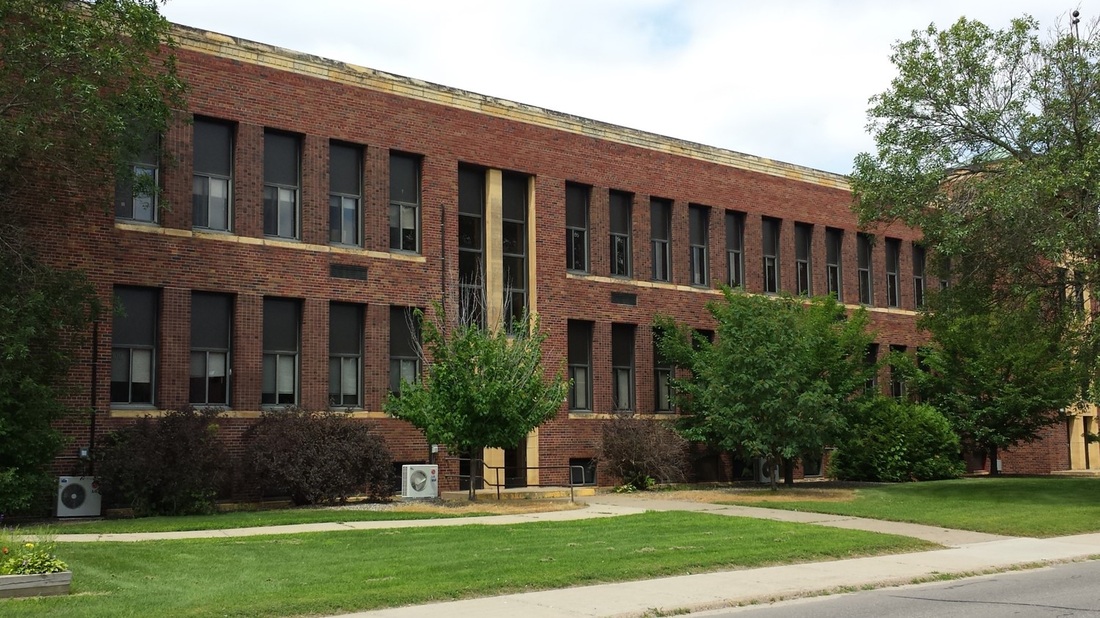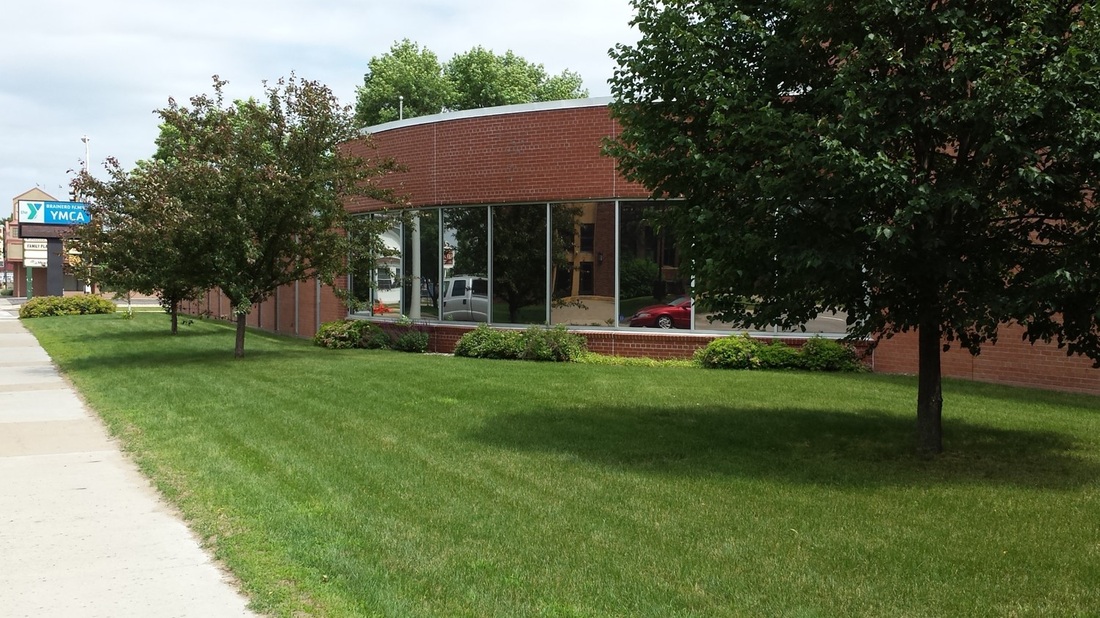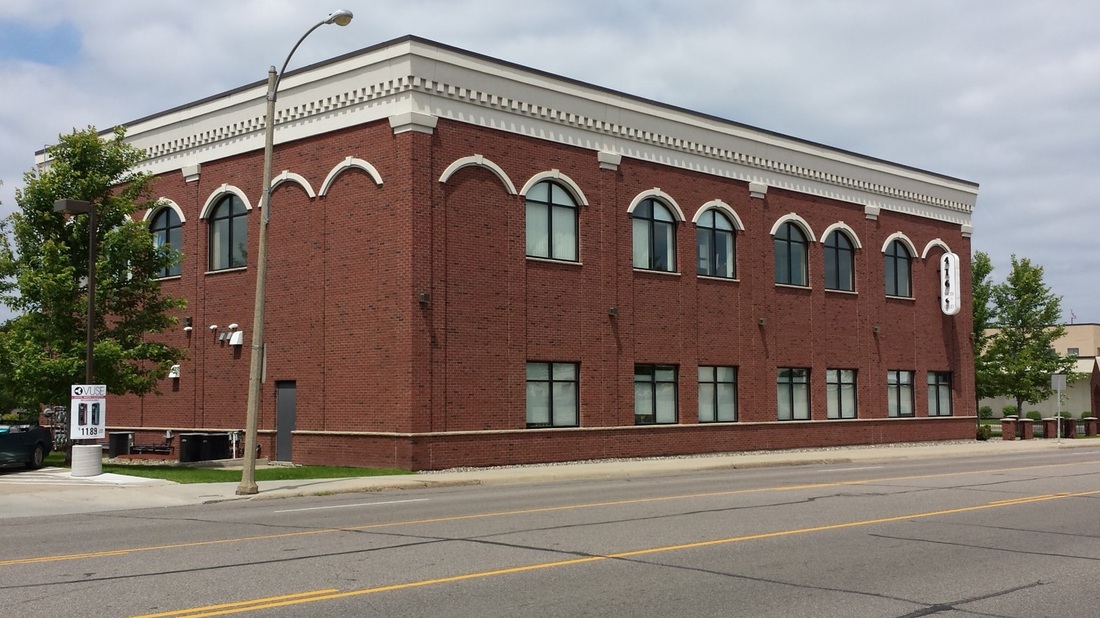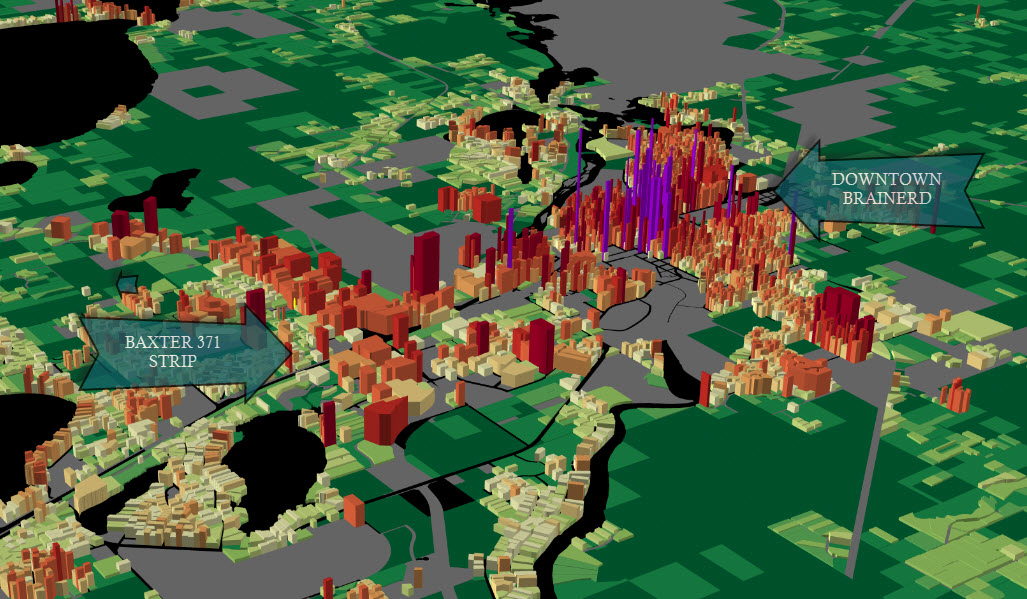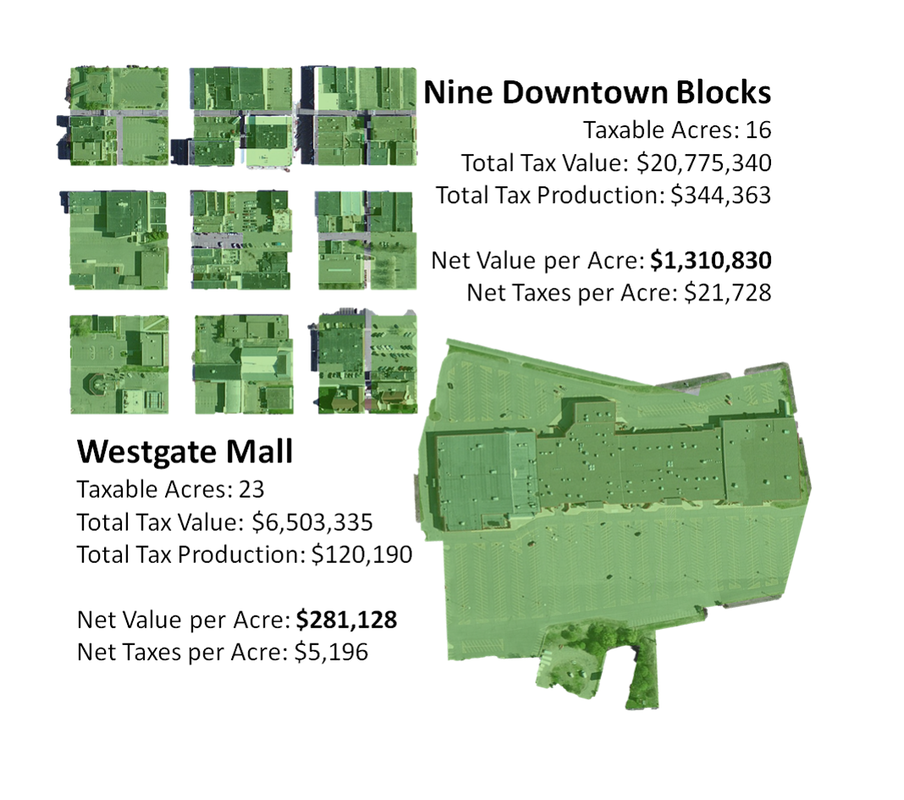|
A street is a platform for creating wealth. This is different than a road, which is a high speed connection between two places.
Even though it is Brainerd's most prominent street, South 6th Street is designed to function more like a road. Its primary job today is to move cars quickly through town. There is little consideration given to any other objective. This has negative consequences for the community. The design of South 6th Street hurts property values and drives out investment. For example, the vacant lot pictured here is for sale for just $4,000. This, despite the tens of thousands of dollars of public infrastructure investment serving that lot. |
Face the street or not?
One way to quickly see whether a street is creating or destroying value is to look at how buildings are designed to interact with it. Lincoln School was built at a time when South 6th Street was Brainerd's greatest street. In the 1930's, the street created a lot of value -- people wanted their home or business located on or near it -- and so a building like Lincoln School would be designed to face the street.
Directly across the street is a more modern building, the YMCA, which was built well after the street had been redesigned as a car-only corridor. South 6th Street today is not a place people want to interact with, and so the updated YMCA was logically designed to turn its back to it. The trees provide additional buffer. The street is a negative presence.
One way to quickly see whether a street is creating or destroying value is to look at how buildings are designed to interact with it. Lincoln School was built at a time when South 6th Street was Brainerd's greatest street. In the 1930's, the street created a lot of value -- people wanted their home or business located on or near it -- and so a building like Lincoln School would be designed to face the street.
Directly across the street is a more modern building, the YMCA, which was built well after the street had been redesigned as a car-only corridor. South 6th Street today is not a place people want to interact with, and so the updated YMCA was logically designed to turn its back to it. The trees provide additional buffer. The street is a negative presence.
|
The most significant private investment made along South 6th Street in recent decades -- the SEH building -- is designed with the same orientation as the YMCA.
It is a nice building, but it completely shuns South 6th Street. We all understand why. South 6th Street is not a pleasant place. In fact, it's quite a nasty place to be in unless you are in a car driving through town. The abandoned buildings and vacant storefronts are a direct result of the negative impact of South 6th Street. |
Despite the design, tremendous wealth exists.
The following map shows the value per acre of properties in Brainerd and Baxter. The higher the box, the more wealth per acre is being created. Despite having the flashy big box corridor and all the development that goes along with it, Baxter seriously underperforms the value created in Brainerd's historic neighborhoods. Despite the major drag that the current design of South 6th Street creates, downtown Brainerd still financially outperforms everything else in Crow Wing County. It's not even close!
The following map shows the value per acre of properties in Brainerd and Baxter. The higher the box, the more wealth per acre is being created. Despite having the flashy big box corridor and all the development that goes along with it, Baxter seriously underperforms the value created in Brainerd's historic neighborhoods. Despite the major drag that the current design of South 6th Street creates, downtown Brainerd still financially outperforms everything else in Crow Wing County. It's not even close!
|
As a specific example, consider the nine blocks of Brainerd's core downtown, the western three of which are being negatively impacted by the current design of South 6th Street. Those nine blocks are worth over $20 million and produce more than $21,000 per acre in property tax revenue.
Contrast that with the Westgate Mall, an investment that required millions of dollars of sewer, water and pavement to make happen. Despite being seven acres larger, its total value is only $6.5 million. The city gets only a little more than $5,000 per acre in property taxes. If you were a farmer, would you rather plant a crop that yielded $21,000 per acre or one that yielded just $5,000 per acre? Why would cities act differently? |
Conclusion
The current design of South 6th Street creates a negative drag on the city's tax base. Despite this, development along and near the street financially outperforms -- by a wide margin -- other development in the county. Imagine how successful Brainerd could be if South 6th Street was designed to actually create wealth for the community.
Such a shift isn't that hard. In fact, there is every reason to believe it would cost substantially less to redesign South 6th Street as a great street instead of putting back a five, or even three, lane highway as is currently being proposed. Instead of spending more to get less, this is a clear example of where spending less can get us a whole lot more.
The current design of South 6th Street creates a negative drag on the city's tax base. Despite this, development along and near the street financially outperforms -- by a wide margin -- other development in the county. Imagine how successful Brainerd could be if South 6th Street was designed to actually create wealth for the community.
Such a shift isn't that hard. In fact, there is every reason to believe it would cost substantially less to redesign South 6th Street as a great street instead of putting back a five, or even three, lane highway as is currently being proposed. Instead of spending more to get less, this is a clear example of where spending less can get us a whole lot more.

